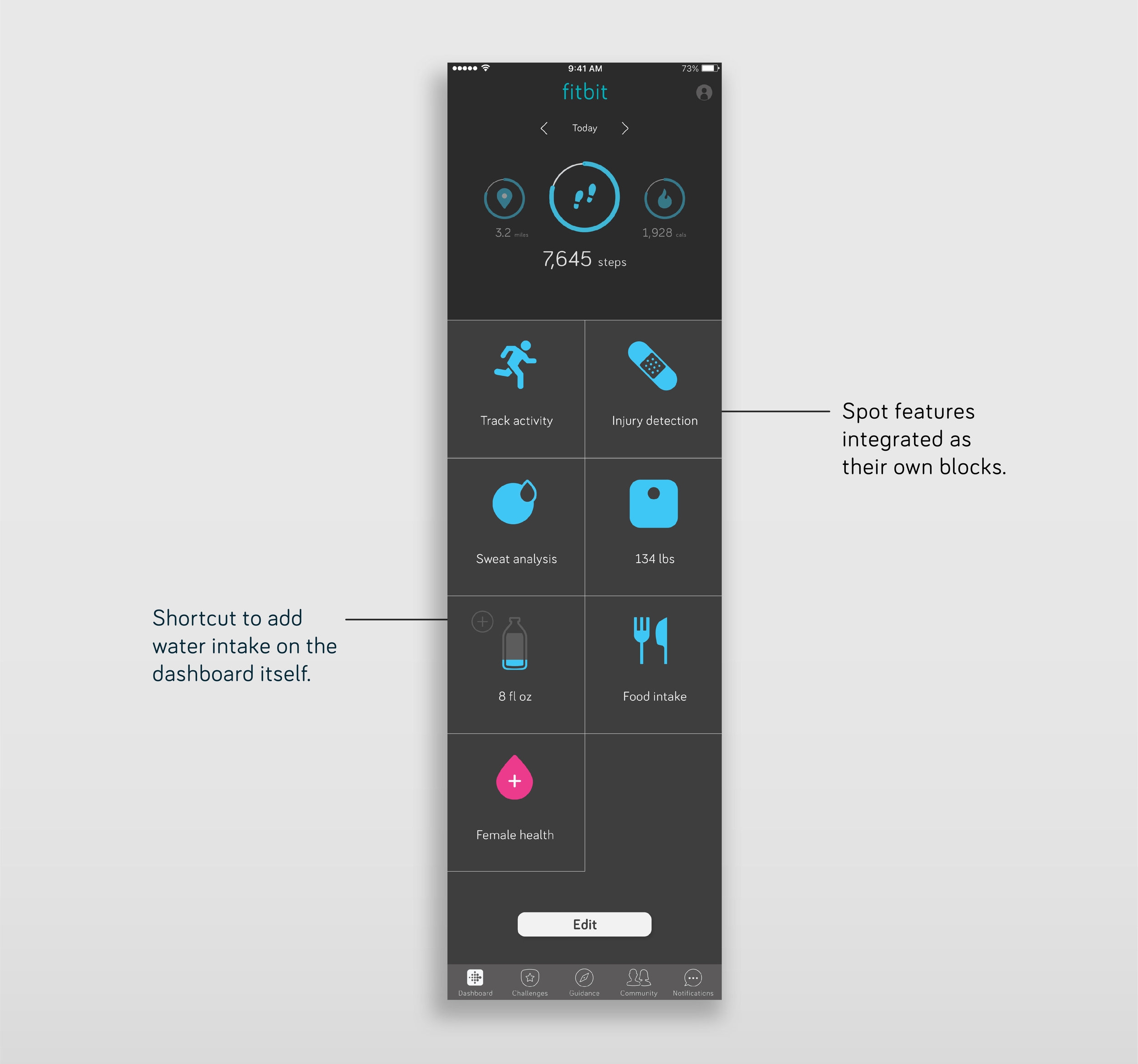Fitbit Spot
Fall 2018
Product Design, UI/UX
Proposing a new direction for Fitbit and their product line, in order to keep up with the advanced technology for fitness wearables and the growing market for smartwatches. For this project I worked with Kanika Kumar, an industrial design student.
The Problem
Fitbit currently offers a range of products — from fitness bands and smartwatches to smart scales and headphones. Although they were one of the first companies in the market for fitness wearables, their products were unable to match up to those produced by well known companies like Xiaomii and tech giants such as Apple and Samsung. While Fitbit shipped 5.4 million units in the last quarter of 2017, Apple shipped 8 million wearable devices in the same period.
The current market for fitness wearables lies on a wide spectrum that ranges from costly, sophisticated smartwatches to affordable, functional devices. Though Fitbit offers a product for each extreme, it falls short of its competitors.
Understanding the User
In its attempt to enter the market for smartwatches, Fitbit is losing sight of its initial user following and their needs. Currently, their new smartwatch, the Versa, targets a user base that believes in a more refined product with added features.
Based on our user research and interviews, we recognized a growing need for devices that are more integrated into the their lifestyle. Moreover, we wanted to introduce features that would help the health conscious population and athletes continue their workouts safely.
We mapped out the user journey for both our personas in order to highlight the pain points. We identified two major opportunities for the introduction of a new product. Users are less inclined to use wrist wearables due to its intrusive nature as an added accessory, and the obvious limit to what they can detect due to their area specific functions.
Introducing Fitbit Spot
We propose that Fitbit should draw back from the smartwatch market and invest in a new technology of fitness trackers — a skin patch would be minimally intrusive on the body as a wearable, and would also provide more accurate and specialized information based on the area it is placed on.
The specificity of the spot opens up a range of opportunities for more advanced and refined analysis of the body and its movement. It could provide functions for detecting muscle stress, sweat rate and water loss, as well as overheating and body temperatures. Together, this trio of features would provide the user with specialized data that would keep injury in check through periodic warnings and suggestions during a workout to hydrate, cool down and stretch.
Introducing the features to the mobile app
In order to show how these added features would function, we designed the interface interactions for the Fitbit mobile app. Additionally, we redesigned the dashboard and further refined the color palette. Looking at the range of Fitbit products we realized that a dark themed interface would better fit the brand image and the industry.
Troubleshooting
Through a second round of research and interviews we realized that a section of our users were uncomfortable with the idea of putting a patch directly on their skin — sensitive and allergic skin is a common phenomenon. Additionally, body hair and irregular surfaces may not be ideal for this product.
Partnership with Under Armour
In order to overcome this issue and appeal to a wider user base, we propose a partnership with the fitness brand Under Armour. We know that Under Armour has made attempts to enter the fitness tracker market with their HealthBox which contains a fitness tracking band, a smart scale and a chest strap to track heart rate. However, Fitbit already offers these services and more with their smart scale Aria, and a range of wrist wearables.
Embedding the spot in athletic gear will benefit both entities — it is a viable product to elevate the standing of Under Armour as a brand in the fitness tracking market, and simultaneously also provides an alternative to customers who may be skeptical about wearing a tracker directly on their skin.
Under Armour would present a new line of athletic gear with the spot embedded in it. Each article of clothing would be area specific depending on where the spot is integrated into the fabric. Based on their choice of daily exercise or workout routines, the user would purchase articles of clothing according to what muscles they use often. The spot would be removable from the clothing so as to ease the process of maintaining the athletic gear.


















